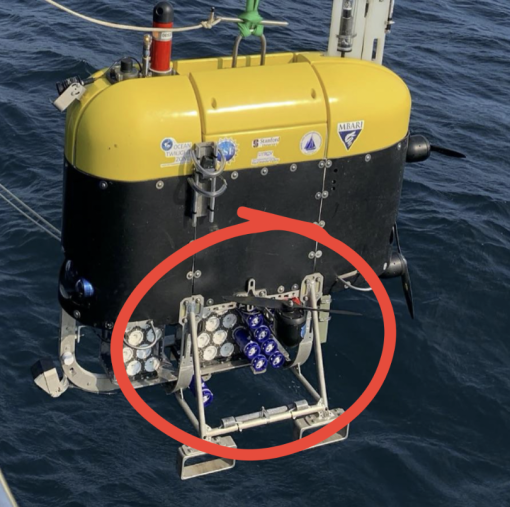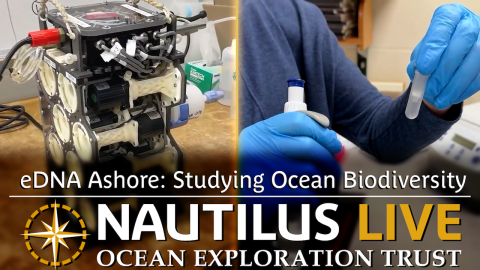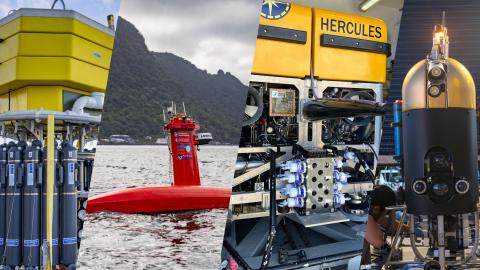Oceanic-WHOI Environmental DNA Samplers

The Oceanic-WHOI samplers were created to increase the efficiency of environmental DNA (eDNA) collection at sea. Environmental DNA includes the trace genetic fragments that animals leave behind as they move through the water. Using forensic-style techniques, scientists can filter seawater to collect this genetic material, which they can then sequence to obtain diagnostic signatures of marine life. This approach enables the detection of a broad diversity of life forms from a single sample, including species that conventional sampling methods like nets miss.
Typically, to obtain eDNA, seawater is collected in Niskin bottles and filtered on the ship. However, this approach is labor-intensive and vulnerable to contamination, and the volume of seawater that is available to be filtered is limited. In particular, for ocean exploration goals, because eDNA concentrations in the deep ocean are especially dilute, filtering large volumes of water enables more taxa to be detected. The Oceanic-WHOI eDNA samplers were designed to get around these limitations by filtering seawater in situ. Their relatively high flow rate and large-area filters enable 100s of liters of water to be filtered in a given sample. Each sampler unit can take up to 16 eDNA samples, and multiple units can be daisy-chained to increase the number of samples that can be collected. The Oceanic-WHOI samplers can be integrated onto different underwater vehicles or platforms, and they have been successfully deployed on the AUV Mesobot, the ROV Hercules, and the Deep Autonomous Profiler lander on E/V Nautilus cruises supported by NOAA Ocean Exploration via the Ocean Exploration Cooperative Institute.
The Oceanic-WHOI eDNA samplers were developed by Oceanic Labs and the Woods Hole Oceanographic Institution. This research was part of the Woods Hole Oceanographic Institution's Ocean Twilight Zone Project, supported by funding as a part of The Audacious Project, a collaborative endeavor housed at TED, and the NOAA Ocean Exploration Cooperative Institute.
Science & Tech
Ocean exploration is a dynamic balance of understanding science and using the best in underwater technology.
Expeditions
Get a sneak peek of where we're headed next or revisit the discoveries of our past expeditions.
Classroom Resources
OET hosts a suite of free educational materials for use in classrooms, at home, or in the community.
Oceanic-WHOI eDNA Samplers At-a-Glance
Depth Capability: 1000 m
Operation: The sampler can be operated on multiple platforms, including AUVs, ROVs, and towed instruments. Multiple 16-filter units can be daisy-chained to increase sampling capability.
Communications: Pre-set sampling or real-time control via shipboard laptop
Flow rate: ~2 liters/minute
Sample volume: adjustable, to > 100 liters
Number of samples per unit: 16
Filters: Waterra capsules


